〈前一集〉
The Theosophical Society and the New Age 神智學會與新時代
很難高估新時代(New Age)的理想和哲學對於占星學象徵意義及其實踐的影響。各種東西方神祕主義(mysticism)與秘教(esoterica)的混合與積累,在現代占星學思想留下了不可抹滅的印象。當心理學模式也被納入新系統時,與過去的系統、方法和技術相較之下,占星學變得幾乎難以辨識。
一般認為新時代運動(New Age movement)的發起人是一八七五年神智學會的創始人之一:H.P.布拉瓦茨基夫人(H.P. Blavatsky,西元一八三一至一八九一年)。該學會的影響力遍及全球,成員包括著名的占星家,比如:艾倫.里奧(Alan Leo)、薇薇安.羅布森(Vivien Robson)、馬克.埃德蒙.瓊斯(Marc Edmund Jones)、H.S.格林(H.S. Green)、愛德華.林度(Edward Lyndoe)以及查爾斯.卡特(Charles Carter)。里奧是最多產的作家,透過學會自營的出版社,出版了許多受到大眾喜愛的占星書籍,因此,他在本研究中非常重要。
里奧在西元一九一七年逝世後,他的同僚仍持續修訂他未完成的書,並持續以他的名義出版他的著作。他與妻子貝絲(Bessie)都是社會運動的愛好者,也是讓社會大眾對占星學重拾興趣的重要人物;很少有占星家能聲稱具有里奧般深遠的影響力,而這樣的影響力是偏向神智學的。因此,我們可以見到布拉瓦茨基夫人的新時代理想被混入到更古老的占星系統;因為此一時期的占星原理是更容易受到影響的。
威廉.里利與他的同儕及占星前輩們都採用西方傳統的預測技術,即便在十七世紀末到十八世紀初的改革熱潮中,仍舊維持大部分的傳統;神智學家則引入了部分的東方神祕主義及信仰原則,也融入了部分靈性主義(Spiritualism)與共濟會(Freemasonry)的概念,共同創造出一種意識形態,包括「轉世」(reincarnation,接續生命的原則),和「業力」(karma,刻意透過轉世來糾正前世犯下錯誤的概念)。
神智學堅信人性完美的概念,因此,就神智學的意義,後代人透過轉世與業力將會越來越開明,即他們所稱的「進化」(advanced),並認為二十世紀初期只有少數「進化靈魂」(advanced souls)的化身。同理,行星被用來代表人類進步或靈性進化的階段,因此:
「透過比我們更先進的智慧得知,她[金星]是存在的,而她的人性已經達到非常高等的階段,如我們稍後將了解的,每顆行星都只是為了達成進化目標的物質世界24。」
人類約可分為三個「階級」(classes),且每個階級對於占星預測(依據個人星盤)的反應也不同:
處於最低階的是未開發和未受過訓練的靈魂,也是進化過程中最年輕的靈魂;最高階的靈魂較年長又經驗豐富,習慣自制(self-control),以及運用理智與反思來思考和行動。這兩者之間人數最多的階級,大多是現階段如我們這種意志還不夠強大的靈魂,但另一方面,這些靈魂也並非全都有可塑性:因為不是所有靈魂都有足夠的感受性回應特定的振動(vibrations) 25。
將不同人群分配到不同階級是常見的做法,「最低階級」毫不意外的也涵蓋「犯罪階級」,以及這些罪犯生長的社會階層。稍後將提到,那些無法理解或認同神智學教義的人,尤其是占星學相關人士,都不被視為較高階級的人類。事實上,那些不相信轉世的人,都「把時間浪費在盯著我們對占星思想的解釋26」。
以下能更清楚說明這點:「那些堅信轉世或輪迴(metempsychosis)的讀者將比其他人更明智地選擇追隨我們27。」還有「……我相信,倘若無法徹底了解神智學及其對占星學的影響,就算是認真且誠心研究崇高行星科學的學生,也無法真的進步。不是每位神智學讀者都能領略深奧的占星學28。」
這些評論很重要,因為這讓他們的讀者與學生們可能會因尷尬而接受神智學的信條,擔心自己會被批評成不聰明或是靈性不夠進化,所以屬於低階的人類,這在階級制度依舊頑強存在的大英帝國是一種不容忽視的暗示。另外有趣的是,里奧提及的「最大宗階級」,被稱為是具社會暗示性的中產階級。
神智學家也相信自由意志,儘管是在有條件的情況下。如果,你是已經進化或中間階級的一員,你就能透過自制來大幅提升克服命運的能力。下層的人就沒有這樣的優勢,只能任由星象所擺佈,因此前人的占星學被貶低為「宿命論」(fatalistic)29,即「過於傾向將星盤中預示的所有事件視為必然與不可避免的命運」。對於自由意志理念的擁護者來說,這可能是合理的觀點。里奧繼續說道:「宇宙偉大的造物主可透過一個人自身的行為,以及他無法掌控的事來引發事件」30,但里奧忽略的是,如果神可以透過人類並對人類引發事件,那麼這只是對命運的哲學論據,而非反對意見。
然而,「自由意志」為占星家無法正確描述星盤提供了另外一個理由。以下說明了無法從本命星盤(nativity)辨識出婚姻伴侶的原因:
如今的事實是,從本命太陽與月亮的容許度來看,我們經手的許多命主已經與星盤描述完全相反的人結婚。在我們看來,這證實了「星象顯示出這樣的傾向但並非絕對」的公理,……如果命主允許事情順其自然,他們當然會與本命星盤中所顯示的人結合,但在這些行使「自由意志」的案例中,他們與星盤描述完全不同的人結為連理31…
這種大膽無畏且不合邏輯的言論在神智學占星家的著作中隨處可見,只是為了他們失敗的技術和方法找藉口。因此,他們認為縱使有些人生來受制於命運,但也有些人不是,或至少沒有到這種程度。其中的訣竅就在於辨識命主所屬的群體,因此回溯性鑑定(Retrospective identification)是更能接近本命星盤狀況的理想方法。一旦有如前述案例的誤判,就能知道命主是屬於兩個更高階級的進化靈魂之一。
這讓預測變得不可能,因為是命主故意做出本命星盤以外的表現,而這類行為是無法預測的,因為星盤上沒有這類象徵意義的描述。占星家無法預測不可預測的事情,所以不能因錯誤而受到指責。這最終引發的問題是:若某些人的行為與他們的本命星盤無關,那麼星盤講的是什麼?
同樣值得關注的是,從里奧的著作中可以看到神祇和占卜一起受到取代:
由於占星學是目前所能想到最全面的研究,也是凡人無法發明的科學,它是由其他世界的神祇直接運作,用以指導我們這些新生的人類32。
占星學一直被視為是神聖的科學,人類可以藉此窺探神的旨意。里奧提出的假設是,占星學是從無名神祇取得的一種間接交流的方式,它不再是進入神聖心靈的手段,也不代表神聖意志。此外,若是以前的占星家受迷信所惑,或是道德過於敗壞,很難想像他們還能參與占星學的建立或發展,因此,占星學可能來自於「非凡人的心靈」33。
Vibrations and Octave expressions 「振動」和「八度表達」
為理解近年來占星學的發展,這裡需要說明神智學教義的另一項原理是「振動」和「八度表達」(octave expressions)的概念:
有些學生更深入調查這項研究的深奧之處,發現那存在著比一般行星影響力更高層次的振動,但那些受到特定行星影響的人,因為無法回應這些較高層次的振動,導致該研究的這個面向受到忽視 34。
再次地,學生必須認同是命主無法展現這些高頻振動的跡象,而不是因為這項原理有誤而導致研究被擱置,如此一來,無論是這項原理或是占星家,都不會因瑕疵而遭到否定。在討論新行星的著作中,這些作者一再強調「振動」的概念。時至今日,即使這一詞使用的頻率不高,卻仍有「命主對各種行星能量反應能力」的相關討論。這種能力是由三種人類階級的概念來判定,也概略說明了占星家在解釋星盤時所犯的錯誤:如果命主無法認可解盤內容,或是沒有經歷到預測的情境,那麼他/她是因為缺乏或過度發展靈性而無法做出回應。當然,占星家想要做出準確的描述和預測,就必須辨識出命主是這三個階級中的哪個階級。他們並沒有解釋做法,但憑直覺獲取這類資訊的提示。
在比較土星外行星的象徵意義時也會碰到這類的理論,即神智學占星家用「八度表達」來描述他們的行為。如同樂理的概念,他們將行星的運行解釋成是另一顆行星的「高八度」或「低八度」。後文將進行說明。
由於不懂占星法則,也不懂占星學和西方哲學之間的淵源,神智學占星家們混雜了哲學與自我意識形態,造就了這種幾乎不需要邏輯又自以為是的防禦。根據里奧的說法,占星學必須從「明智的迦勒底時期」(wise Chaldea)開始復興,並從後來的希臘人、羅馬人、阿拉伯人及猶太人手中解救出來,他的說明如下:
自明智的迦勒底時期的輝煌歲月以來,首次在本系列(里奧所有占星著作的標題)中嘗試向世人呈現真正的迦勒底占星系統。此真理已經留存於符號學當中,而這些符號是如此簡單到讓使用的人都能讀懂。是時候再次揭露隱藏在圓圈、十字和星形中的意涵了。我們將從去除過去散落在周遭零碎的資訊開始這項任務。我們只是單純想為人類服務,想將作者桌邊散落的智慧碎片交給渴求知識和熱愛真理的人,後者將不勝感激這些老師們的教導,而這就是促成我們寫作的動力35。
里奧的著作始終沒有提供關於上述的任何證據。書中提到「真正的迦勒底系統」,其來源就跟里奧的老師一樣沒有具名,但是卻能讓讀者相信,里奧可以取得一些明確的占星智慧資料。以下的引述,毫無疑問是展示他對自己的正直,以及對神智學意識形態的信心35。
「打從一九○三年首度出版這部作品,就已經奠定了占星學的科學基礎36。」
這種確信是那個時期的特色,尤其在科學方面。占星學被認為是一門實驗科學,並且或許能夠成功通過嚴苛的科學測試。有人認為,它的名稱對於感興趣的科學家而言是個障礙,因為連結到過去所謂的「過度行為」:「毫無疑問,它必須以其他名稱受人崇敬,例如宇宙心理學(Cosmic Psychology),或是……宇宙生態學(Cosmecology)37。」
在某些情況下,這些作者顯然試圖搶在天文學家發現新行星之前佔得先機:
我們有幾顆行星繞著太陽轉,第一顆尚未被天文學家發現的是祝融星。……有趣的是,根據某種神祕教義,這顆星球註定要成為我們多數人類在現實世界的家園,隸屬於我們自己的世界之鏈(chain of worlds) 38。
這類的說法被視為是發現冥王星的預言,但天文學家也預測到了,兩者皆有對錯。
以下將概述象徵意義附加到新行星的過程。如前所述,這並非來自科學的預見,而是來自「世界之鏈」的神智學意識形態。其中,每顆行星都代表了人類靈性進化的各個階段,人類越向太陽系外發展將會越進步。
月球可稱為地球之母,因為曾經存在於月球上的所有生命、水和大氣都被帶到了地球,而且月球作為過去世界之鏈中的物質世界,也與我們的進化大有關聯39。
「…[木星]目前尚無人居住,正在為未來的居民做準備。40」
由此可以很明確地知道,神智學家相信每顆星球都曾經或即將為人類所居住,但這並不會成為占星學的法則;從里奧在冥王星命名的說明中證實了這點,而後來的占星學也吸收了這些教義:
就這層意義來說,天王星並沒有入旺的星座,且天王星與水瓶座的對應,只能視為與水瓶座開始連結的超人類「螺旋」進化有關,跟一般從白羊座開始的星座週期無關。同樣的狀況也適用於海王星……41
這些言論暗示,神智學家並不打算取代傳統以來占星學對太陽系的看法,或至少,是為了其他目的。我們可以從頻繁的暗示中觀察到,與神智學的深奧驅動力相反、具有世俗性質的傳統占星學正在被建構一個新的系統;它最初試圖從原本的系統區分開來,但最終卻又融合為一。
往後幾頁的判斷通則,即使不是最好,但已經是嘗試到目前為止較好的解釋方法。我急於向學生們分享的並沒有抄襲其他書籍(這是大多數占星家採用的方法),而是經過深思熟慮且實踐多次的結果;對於和我一樣全神貫注於此的人,希望這個學習的片段能幫助他們更正確地判斷星盤,因為這表達出新式占星學(New Astrology)的概念。《現代占星學》(Modern Astrology,里奧的月刊)的創立已奠定新式占星學的基礎,期望能淨化與重建古老的占星科學,…42
儘管神智學占星家將「迦勒底人的智慧」視為「古老的科學」,並告訴讀者他們推崇的技術和方法皆源自於迦勒底人(Chaldeans),可是他們卻從未透露資料來源。當這些技術受到質疑時,他們便引用自己的信條,即必須成為神智學者(代表更高階級的人類)才能理解這些占星原理。倘若他們的技術仍未產生預期的結果,普遍便會再建議學生要發展他們的直覺。43
某位里奧雜誌的投稿者對這點進行澄清:「有些人可能會說,舊的方法對我們的前人來說已經夠好了,應該也能滿足我們,但這是進化的時代,世界不會靜止不動,行星也是……44」
在里奧及其追隨者的著作中經常反覆提到這樣的概念。他們對於占星學發展的影響是廣泛而長遠的,所以適合將他們的作品用於探索土星外行星象徵意義的起源。
神智學者的占星論點不時受到挑戰,例如:「現今的大趨勢是在所謂秘教主義的舒適圈中傳播,但占星學必備的首要條件是精準度與真實度,而非偽宗教式的臆測,只有專注於實作與科學面,我們才能讓占星學真正發揮作用,也才能得到應有的認同 45。」不過,發表此聲明的作者,仍舊依循神智學的占星模式運作。
Leo’s magazine and Astrological Society 里奧的出版社和占星學會
前面的引述突顯了已經持續多年的辯論。占星學會是在里奧的雜誌—《現代占星學》(Modern Astrology)的贊助下成立,因此兩者皆可視為帶有神智學的偏好。學會在西元一九一二年舉辦了第一次的研討會「會報一」(Transaction 1),辯論神智學說在占星學中的重要性,而在大會議程手冊的標題:「密義或顯義?座談會」(Esoteric or Exoteric? A Symposium)便已確立了這場辯論的範圍。神智學被視為「密義」占星學,其他不相信輪迴與業力的,則是「顯義」占星學;後者可與「唯物主義」(materialist)互換詞。因此,打從一開始,神智學者就操縱著這場辯論,且事實上,會報祕書(負責編輯大會手冊的人員)透過在那些頁面上添加尾註的方式,繼續辯論並反對所謂的唯物主義,以確保密教主義者不會發生矛盾的風險。
反對在占星學中納入神智學說的人,例如羅布森,他主張對占星學進行科學檢驗,而這與神智學教義一樣,都是該時代的特徵:
「……不去區分[占星學與神智學]……會讓我們有失去眾多學生,以及發生讓知識份子對我們的共同目標產生成見的風險46。」
而會報祕書則在尾註簡潔陳述了這樣的狀況:
「那些拒絕對占星事實進行神智學式詮釋的人,並非爭論是否還有其他可能的解釋,而是仍有義務提出說明並交付檢驗。但到目前為止,上述的義務似乎尚未獲得認同 47。」
讀者可以推想得到,神智學式的占星詮釋並非新興的觀點,而是擁有古老的歷史脈絡才能應付這樣的挑戰,因而在辯論結束時並沒有出現分歧的意見,這也反映自那時以來一直存在的常態。
繼續閱讀:第三集《占星學的基本原理》
Uranus, Neptune, and Pluto:
An Investigation into the Sources of their Symbolism Part 02
Sue Ward (Written 2002)
The Theosophical Society and the New Age
It is difficult to overestimate the influence that New Age ideals and philosophies have had on astrological symbolism and practice. The accretion of various mixtures of Eastern and Western mysticism and esoterica has impressed itself indelibly on modern astrological thought. When the psychological model was also included into the new system, astrology became almost unrecognizable when compared to its former system, methods, and techniques.
Responsibility for the origins of the New Age movement is generally attributed to Madame H.P. Blavatsky (1831– 1891).23 She was one of the founder members of the Theosophical Society inaugurated in 1875. Its influence extended worldwide and its membership included such prominent astrologers as Alan Leo, Vivien Robson, Marc Edmund Jones, H.S. Green, Edward Lyndoe, and Charles Carter. Leo was the most prolific writer and through the good offices of the Society’s own publishing house produced many popular books on astrology. He is, therefore, important for our purposes here.
What Leo began, his fellows continued after his death in 1917, with revised editions of his books continuing to be published under his name. He and his wife, Bessie, were enthusiastic activists and their efforts were important in the revivification of interest in astrology. Few astrologers can claim to have had such a far-reaching influence as Leo had, and that influence was one of a Theosophical bent as is evidenced by his published works. Thus we see the ideals of Madame Blavatsky’s New Age being mixed into the much older astrological system because by this time astrology’s principles were considerably more pliable.
The astrology of William Lilly, his contemporaries, and predecessors was of the western predictive tradition. Even with the reforming zeal of the late seventeenth and early eighteenth centuries, much of that tradition had remained intact. The Theosophist input was part Eastern mysticism and religious principles, part Spiritualism, and part Freemasonry. Together they produced an ideology embracing, among other things, reincarnation (the principle of successive lives) and karma (the notion of reincarnating expressly to correct mistakes made in previous lifetimes).
Theosophy also held to the notion of the perfection of humanity, in that successive generations would become increasingly enlightened (in a Theosophical sense through reincarnation and karma). These they named as ‘advanced’ and acknowledged that but few ‘advanced souls’ had incarnated in the early part of the twentieth century. Similarly, the planets were used to denote humanity’s stage of advancement, or spiritual evolution, hence:
We learn, from those more advanced in knowledge than ourselves, that she [Venus] is inhabited and that her humanity has reached a very high stage. For each planet, as we shall learn later, is a physical world for the purpose of evolution.24
There were approximately three ‘classes’ of people and each class responded to astrological predictions (made via their horoscopes) differently:
In the lowest class stand undeveloped and untrained souls, those who are yet young in evolution; in the highest, those who are older and more experienced souls, practising self-control and using reason and reflection both in thought and action. Between these two stand by far the largest class, in which are found the majority of souls of our present stage wherein the will has not yet full power, while on the other hand it is not entirely plastic: there is sufficient receptivity to respond to certain vibrations and not to others.25
It became common currency to allocate various groups of people to one or other of these classes. It comes as no surprise to note that the ‘lowest class’ contains the ‘criminal classes’, and that section of society that breeds them. Later we shall see that those who failed to understand or agree with the Theosophist doctrine, particularly as it pertained to astrology, were considered not to be of the more advanced levels of humanity. In fact, those who did not believe in reincarnation were “wasting their time in endeavouring to follow our reasons in astrological thought.“26
This is more clearly stated thus: “Those of our readers who hold to the doctrine of reincarnation, or metempsychosis, will follow us more intelligently than others.“27 And, “…I am convinced that no careful and sincere student of the venerable science of the stars can really progress without a thorough knowledge of Theosophy and its bearing upon Astrology. Not that esoteric astrology lies open to the eye of every casual reader of Theosophy.“28
These comments are important because it is likely that their readers and students would be embarrassed into accepting their tenets, fearing that they would be judged unintelligent, or lacking in spiritual advancement and, thus, belonging to the lower class of humanity. In a time when the class system in England was still firmly in place, the implications of such statements would not be missed. It is interesting also that ‘the largest class’ mentioned by Leo, would be termed the middle class with it social implications.
Theosophists also believed in free will, although this was conditional. If you were one of the advanced or middle classes, your ability to overcome your destiny through self-control was greatly enhanced. Those of the lower order were not so advantaged and were at the mercy of their horoscopes. Thus was the astrology of their predecessors disparaged as being ‘fatalistic’.29 It was ‘”far too inclined to regard all events foreshadowed in the horoscope as if they were a necessary and unavoidable fate.” This might be considered a reasonable point to raise for an adherent to the philosophy of free will, but Leo continues with: “The Great Architect of the Universe can bring events to pass through a man’s own actions as well as through those occurrences which he cannot control.” 30 He has overlooked the fact that if God can cause events through and to humanity, then that is an argument for the philosophy of destiny, rather than against it.
Freewill provided yet another reason for the astrologer’s inability to delineate the horoscope correctly. The following reasons were given for the failure in identifying the marriage partner from the nativity:
Now it is a fact that many whose nativities have passed through our hands have married the exact opposite description of individual to that described by the application of the solar or lunar orb, and to our mind this bears out the axiom that ‘the stars incline but do not compel’, … had they [the native] allowed matters to take their course their union with the persons so signified in the nativity would naturally have followed, but in these cases where they exercised ‘free will’ they married to a far different description of individual…31
Nothing daunted, such illogicality is to be found throughout the writings of the Theosophist astrologers, providing a ready excuse for the failure of their techniques and methods. So, while the lives of some were subject to Fate, the lives of others were not, at least, not to such a degree. The trick lay in recognizing who belonged to which group. Retrospective identification thus becomes a desirable method of approaching the nativity. Once an incorrect prediction has been made, as in the preceding example, the native can then be identified as belonging to one of the two higher classes of evolution.
Thus prediction becomes impossible because the native wilfully behaves outside of his or her astrological parameters. Such actions cannot be predicted because they are not described by the symbolism produced by the horoscope. The astrologer cannot predict the unpredictable and so cannot be blamed for error. This ultimately raises questions about the purpose of the horoscope; if certain individuals act independently of their nativities, what is the horoscope describing?
It is noticeable, too, from the writings of Leo that God is being supplanted along with divination:
For Astrology is the most comprehensive study conceivable, a science which no mortal mind could invent, being the direct work of immortals who came from other worlds to instruct our infant humanity.32
Astrology had always been accepted as divine science, the means by which humanity might glimpse the Will of God. Leo proposed that astrology was obtained from unnamed immortals, introducing an indirect line of communication; astrology is no longer a means to access the Divine Mind; it is no longer a representation of Divine Will. Furthermore, if the astrologers of previous ages had been fooled by superstition and corrupted by excess, it would be unthinkable that they should have had a hand in its construction or development. Thus, astrology can come from “no mortal mind“. 33
Vibrations and Octave expressions
Another principle of Theosophist doctrine needing explanation in order to understand the development of astrology in recent times is the notion of ‘vibrations’ and ‘octave expressions’:
A few students, looking more deeply into the esoteric side of the study, have discovered that there are higher vibrations than those generally attributed to the influence of the planets, but the failure of those coming under any particular planet to respond to these higher vibrations has caused this side of the study to be neglected.34
Again, the student must accept that it is the failure of the native to show signs of these vibrations, not the failure of the principle, which has caused the study to be laid aside; neither the principle nor the astrologer was rejected as flawed. The concept of ‘vibrations’ is repeated many times throughout the work of those authors who discuss the actions of the new planets. It continues to the present day, although often without using the word, and discusses the native’s capacity to respond to the various planetary energies. Such capacity was judged through the concept of the three classes of humanity. What this presents is a catch-all for the errors made by astrologers in their delineations of horoscopes: if the native did not recognize the interpretation, or did not experience the prediction, he or she had failed to respond properly because of his or her lack of spiritual development, or because of an excess of it. It was, of course, necessary for the astrologer to be able to recognize members of the three classes if they were to make accurate delineations and predictions. The method of doing so is not explained, but there are hints about obtaining such information intuitively.
Such theories will be encountered when the symbolism of the trans-Saturnian planets is compared, in which the Theosophist astrologers describe their actions in terms of ‘octave expressions’. In a musical sense, they explain a planet’s operation as a ‘higher’ or ‘lower’ octave expression of another planet, as will be demonstrated later.
Along with this admixture of philosophies and ideologies was their lack of understanding of astrological principles and its Western philosophical origins, resulting in, what can be described as, a self-righteousness defensiveness that required little in the way of logic. According to Leo, astrology had to be recovered from ‘wise Chaldea’ and rescued from those who had come after (the Greeks, the Romans, the ‘Arabs’, and the Jews). It produced such statements as:
For the first time since the glorious days of wise Chaldea an attempt is made in the present series [his Astrology For All titles] to place before the world the true Chaldean system of Astrology. That truth has been preserved in its symbology, and so plain are its symbols that he who runs may read. The time has come to again reveal the hidden meaning concealed so long in circle, cross, and star. We shall commence the task by removing some of the débris that has fallen around the title during the past ages. One desire only prompts our writing, the desire to serve humanity and to give to those who possess an eager intellect and a pure love for truth some of the crumbs of wisdom that have fallen from the table of those whom the author is truly grateful to know as his teachers.35
As far as can be ascertained from his books, no evidence of the above was ever offered. His sources for the ‘true Chaldean system’ are, like Leo’s teachers, unnamed, but the reader is led to believe that Leo has access to some definitive source of astrological wisdom. The following quote leaves little doubt about his confidence in his own rectitude and that of his Theosophist ideology.
“since the first Edition of this work was published, in 1903, the scientific basis of Astrology has been definitely laid down.“36
Such certainty was a feature of the period, particularly with regard to the sciences, and astrology was regarded as an experimental science, potentially having the capacity to be successfully tested through the rigours of scientific method. It was suggested that its name presented an obstacle for interested scientists because of its connection to the so-called excesses of the past, hence: ‘Doubtless it will have to be rendered respectable under some other name, such as Cosmic Psychology; or, … Cosmecology – the Ecology of the Cosmos.’37
In some instances, it is apparent that those writers were attempting to steal a march on astronomers by pre-empting their discoveries:
Revolving around the Sun then, we have several planets. The first, not yet discovered by astronomers, is called Vulcan. … It is interesting to note that according to a certain body of occult teaching, this planet is destined to become the future physical home for the majority of our humanity, and also that he belongs to our own chain of worlds.38
Statements such as this have been taken as predicting the discovery of Pluto, but astronomers, too, were predicting such discoveries, both correctly and incorrectly.
Here is provided a glimpse of the proceedings for attaching certain symbolism to the new planets. As explained earlier, such anticipation resulted not from science, but from the Theosophist ideology of the ‘chain of worlds’. In this, each planet represented a stage in human spiritual evolution; becoming increasingly advanced the further outward in the solar system humanity progressed.
The Moon may be called the mother of the earth; for all life that once existed there, together with its water and atmosphere, has been drawn off by the earth, the Moon being the physical globe in a past chain of worlds connected with our evolution.39
“…[Jupiter] is in course of preparation for its humanity, being at present uninhabited.“40
From this it is clear that they also believed that each planet was, or would be, inhabited by humanity. This was not intended to be, or become, an astrological principle, evidenced by Leo’s instruction regarding the naming of Pluto mentioned previously. These were doctrinal statements, being absorbed by astrology later:
In this sense, Uranus can have no sign of exaltation, and its correspondence with Aquarius can only be considered as connected with the ‘spiral’ of superhuman evolution which commences with Aquarius and having no relation to the ordinary circle of signs which commence with Aries. The same remarks apply to Neptune…41
These remarks imply that the Theosophist view of the solar system was not intended to replace that of astrology’s tradition, or, at least, it was to serve another purpose. It is observable in the frequent allusions to the exoteric nature of the astrology of tradition, as opposed to Theosophy’s esoteric drive, that a new system was being constructed. A system that, at first, was intended to be separate from that already in place, but came to merge with it, and eventually, to subsume it.
In dealing with the general rules for judgment in the following pages, an attempt is made to strike a higher note than has hitherto been struck, and although it is not the highest, it is quite high enough for the present. What is here written has not been copied from other books, a practice which seems to have been adopted by the majority of writers on Astrology, but is the result of deep thought and practical experience, which I am anxious to share with my fellow students; and to those who like myself have become absorbed in its study this fragment of learning is offered in the hope that it will help them to judge a horoscope more correctly than would otherwise be the case. For it strikes the note of the New Astrology, the foundation of which has been already laid by the establishment of Modern Astrology [Leo’s monthly magazine], the desire of which is to purify and re-establish the ancient science of Astrology, …42
For all that they harked back to “wise Chaldea” as the “ancient science”, telling their readers that the techniques and methods they are promoting derived from the Chaldeans, their sources are never divulged. When these techniques are questioned, they quote their own creed of its being necessary to be a Theosophist (implying an individual of a more ‘advanced’ type) in order to understand these astrological principles. If the techniques are still not producing the expected results then a common suggestion was that to be successful the student needed to develop their intuitive sense.43
A contributor to Leo’s magazine clarifies the point thus, “Some may say the old method was good enough for our predecessors, and should satisfy us, but this is the age of evolution, the world does not stand still, neither do the planets…”44
The notions set down here are repeated many times throughout Leo’s own work and that of his fellows. Their influence on astrological development having been extensive and durable, it is proper that their works should be used for the purposes of discovering the derivation of the symbolism of the trans-Saturnians.
The Theosophist view of astrology was challenged from time to time, for example, “There is too great a tendency nowadays to float about in a comfortable haze of so-called esotericism. The first need of Astrology is accuracy and definition, not pseudo-religious speculation, and it is only by concentrating on the practical and scientific side that we can really make Astrology of service, and obtain for it the recognition it deserves.“45 The author of this statement continues to follow the astrological model of the Theosophists, though.
Leo’s magazine and Astrological Society
The preceding quote highlights the debate that had been continuing for some years. The Astrological Society was formed under the auspices of Leo’s magazine, Modern Astrology. Both could thus be seen to have a Theosophical bias and in 1912, in London, the Society held its first symposium, ‘Transaction 1’, to debate the emphasis of Theosophical doctrine in astrology. The resulting booklet is entitled, ‘Esoteric or Exoteric? A Symposium’ and at once sets down the parameters of the debate. The astrology of Theosophy is deigned ‘esoteric’, while that of everyone else, particularly those who do not believe in reincarnation or karma, as ‘exoteric’. The latter is used interchangeably with ‘materialist’. So, from the outset, the Theosophists are controlling the debate. In fact, the transactions secretary (responsible for editing the booklet) continues the debate within those pages, by adding endnotes, which argue against the so-called materialists and for the esotericists without risk of contradiction.
Those who argued against the inclusion of Theosophical doctrine, like Robson, argued for the scientific examination of astrology, which was as much a sign of the times as was the doctrine of Theosophy:
“…by not keeping them [astrology and Theosophy] distinct … we run the risk of losing many students, and of prejudicing our common cause in the eyes of the intellectual world.“46
The transaction secretary in his or her endnotes, states the case succinctly: “the onus remains on those who reject the theosophical interpretation of the facts of Astrology, not to argue that there may be some other explanation, but to produce it and submit it for examination. So far, it would seem, that obligation has not been recognised.“47
The reader might infer that the Theosophical interpretation of astrology was not the newcomer and had an ancient lineage for such a challenge to be made. The debate ended without a division, reflecting a general state of affairs that has persisted since that time.
23 Nicholas Campion, The Great Year (London 1994), p. 15.
24 Leo, Astrology For All, p. 3.
25 Alan Leo, The Progressed Horoscope, (London, 1929), p. xi; Isabelle M. Pagan, From Pioneer to Poet or the Twelve Great Gates,
(London, 2nd ed. 1926 of 1911) where she speaks of the ‘evolved’ and ‘primitive’ types in relation to the zodiacal signs.
26 Leo, The Progressed Horoscope. p. xi.
27 Sepharial (William Gorn Old, 1864-1929), The Manual of Astrology (London, revised 1962). p. 75.
28 Leo, ‘The Seven Planets’, The Astrologer’s Magazine, p. 514.
29 Leo, The Progressed Horoscope, p. 32.
30 Leo, The Progressed Horoscope, p. 32.
31 ‘A Bone of Contention’, The Astrologer’s Magazine, vol. 1, no. 8 (March 1891), pp. 171-172.
32 Alan Leo, How to Judge a Nativity (London, 1935), p. v.
33 Whilst it is possible that the term ‘immortals’ corresponds with the ‘angels’ in other philosophies and religions, and ‘other worlds’ to ‘heavens’, the change of language indicates a change of emphasis. Indeed, these ‘other worlds’ were nominated as the planets of our solar system.
34 Leo, How to Judge a Nativity, p. 28.
35 Leo, How to Judge a Nativity, p.iv
36 Leo, How to Judge a Nativity, note p. 29.
37 Nicholas de Vore, The Encyclopedia of Astrology, (New York, 1980), p. vii.
38 Leo, Astrology For All: Part I, p. 3.
39 Leo, Astrology For All: Part I, p. 4.
40 Leo, Astrology For All: Part I, p. 5.
41 Leo, Astrology For All: Part I, p. 145.
42 Leo, How to Judge a Nativity, p. vi.
43 Leo, How to Judge a Nativity, p. 67.
44 ‘Aphorel’, ‘The Signs of the Zodiac and their “Rulers”’, The Astrologer’s Magazine, vol. 1. no.3. (October 1890), p. 67.
45 Vivian Robson, A Beginner’s Guide to Practical Astrology
(London, 1933), p.
46 Arthur Mee, ‘Avoid Religion’, Esoteric or Exoteric: a Symposium, The Astrological Society (London, 1912), p. 28.
47 Transaction
翻譯:Hueimin Lin/Julie Ho|編審:Maki S. Zhai
本文經作者授權翻譯刊登,其翻譯著作權歸屬 智者星象學院所有,歡迎分享本網頁連結給你的朋友,但請勿直接轉載內容。
This article is translated and published with the authorization of the author, and the copyright of this translation belongs to Astro Mages.org.
You may share the link to this page with your friends, but please do not directly reprint the content.



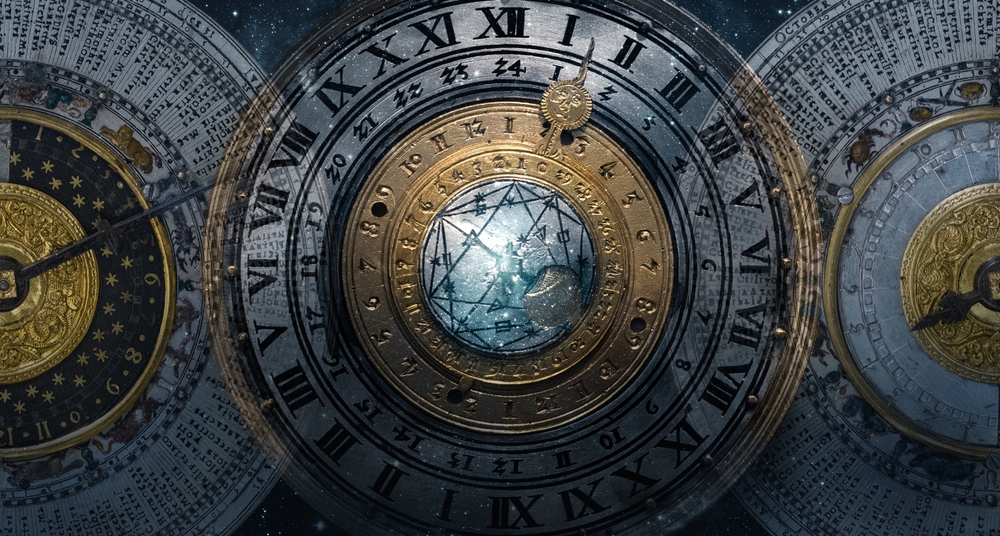



-11-e1731278739832-165x92.png)

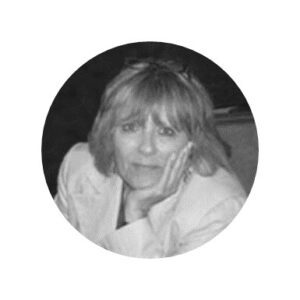
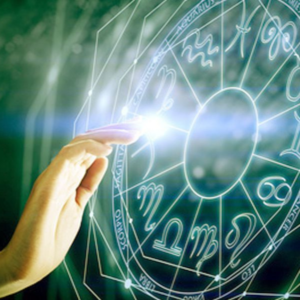
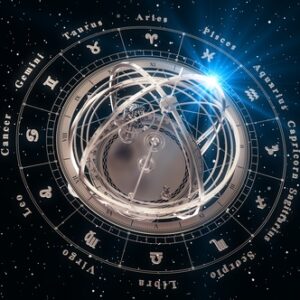
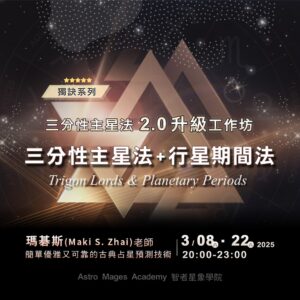
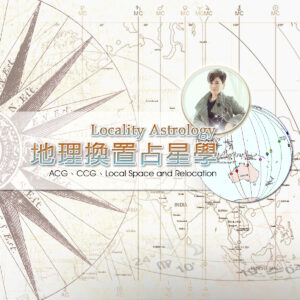
Add comment